How do you spell "relief"?
We are no longer building saddle trees, but we have two videos about how Western saddles fit horses available on our westernsaddlefit.com website.
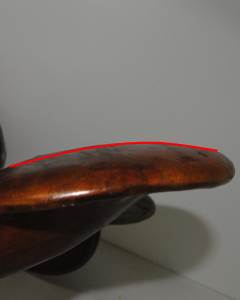 |
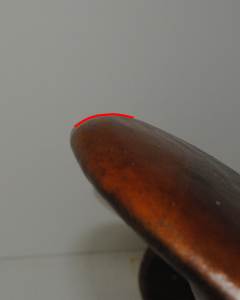 |
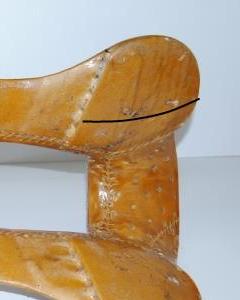 |
Is the allusion to a very old commercial showing my age? Anyway… We had a question recently from someone wanting to clarify the difference between crown, flare and relief. Since they are all terms relating to curves on the bottom of the bar, how do you differentiate them?
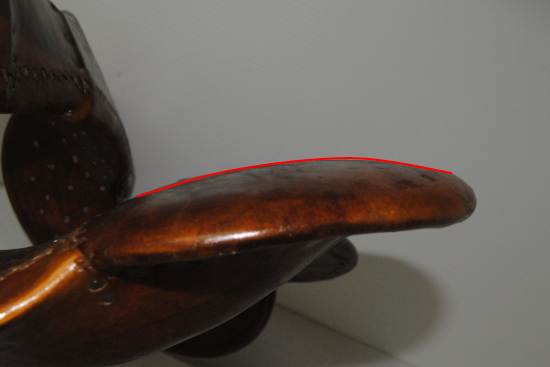
Crown is the easiest one to distinguish from the other two. It is the curve side to side across the bar. And it changes (surprise, surprise) as it goes down the bar, generally being roundest in the front, getting flatter as you go back along the bar,
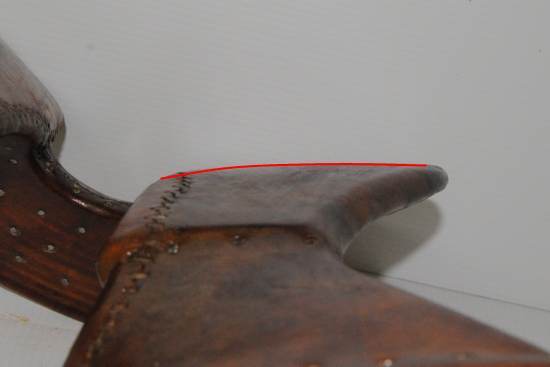
and is usually flattest on the back bar pad. How flat is “flattest” depends, of course, on the shape of the horse. And even if the horse is very round and convex, it is never a good idea to make concave bars. Why? That edge effect…
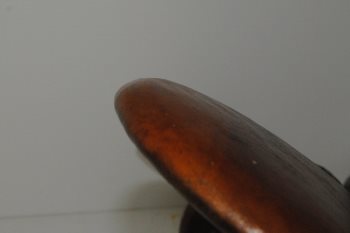 |
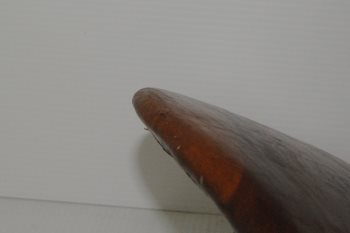 |
Which brings us to our next definition – Relief. This is the curve along the edges and tips of the bars that makes a longer transition from pressure to no-pressure. Here are pictures of the edge of our bar at the front and back bar pads.
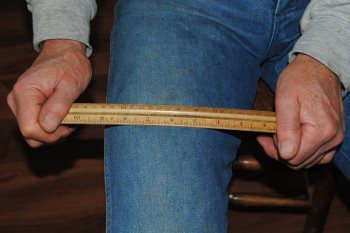 |
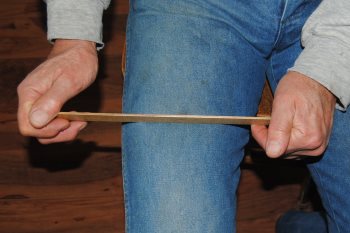 |
Which can you tolerate for a long time? A ruler on edge pressed into your leg, or the flat of a ruler pressed into your leg?
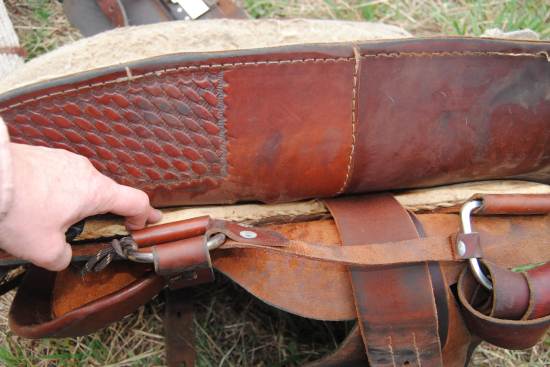
The same goes for edges on bars. Sharp edges, such as this one on a very poor quality saddle and tree, will make high pressure areas where it contacts the horse. Obviously it wouldn’t have been difficult to round the edge of a bar this thick and make it more comfortable for the horse, but they didn’t bother to do that.
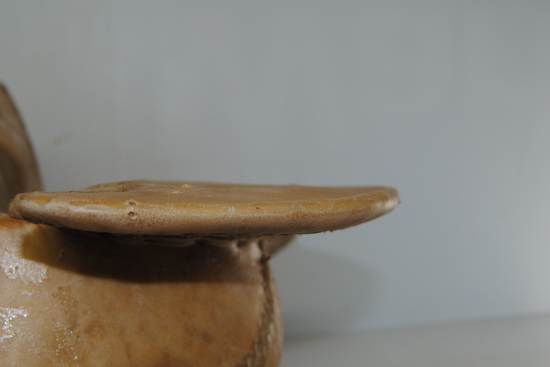
Another thing that makes it hard to have good edge relief is having very thin bars, or very flat or concave bars. When you come to the edge, you don’t have a lot of wood left to be able to make a nice curve over that last ½” or so, and the edge ends up sharper than ideal.
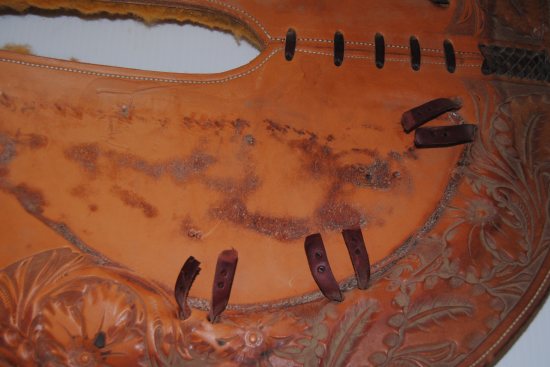
The result is higher pressure on the edge than on the rest of the bar. You can see the effect on the skirts that came off the tree in the picture above. The wear is all on the edges of the bar and on some odd spots in the middle that corresponded to where the screws holding the rigging came right through the bar. While some makers prefer really thin bars for lightness, for refinement and for ease of blocking their skirts, there can be serious drawbacks for the horse if a lot of care isn’t taken in building on these trees.
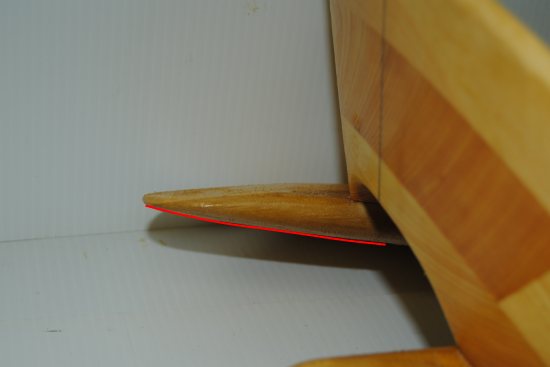
The same idea goes for the back bar tip, but there we don’t just round the very edge. Rod gives a bit more of a lift to the back couple of inches, essentially giving it a bit more rock right at the back, just to ensure that the bar doesn’t dig into the loin of the horse.
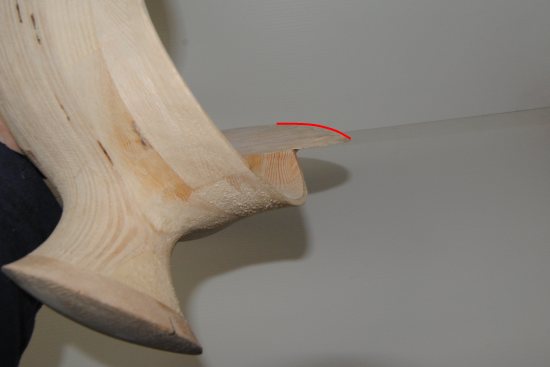
A place that relief is especially important are the front bar tips. Here’s a picture of one of our trees. There is a lot of curve over that last inch or so of bar which means there will be no sharp end to the pressure as it comes up to the shoulder. Instead, there will be a gradual transition. If the saddle maker blocks his skirts well (molds the leather when wet around the bars) that transition is made even softer.
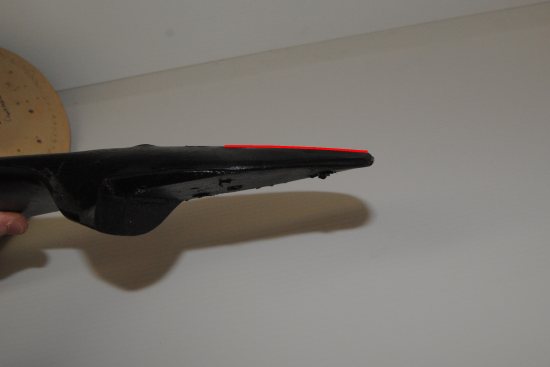
Compare that to the front bar tip on the flex tree we have downstairs. It is almost dead flat all the way to the front with a really thin edge. (You’ll have to read the post we wrote about that tree to learn how it pressure tested.)
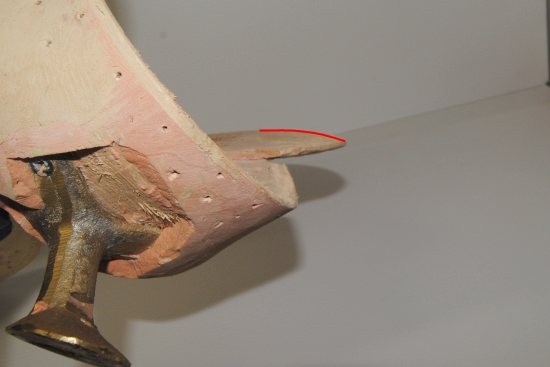
And then, of course, there are many variations in between.
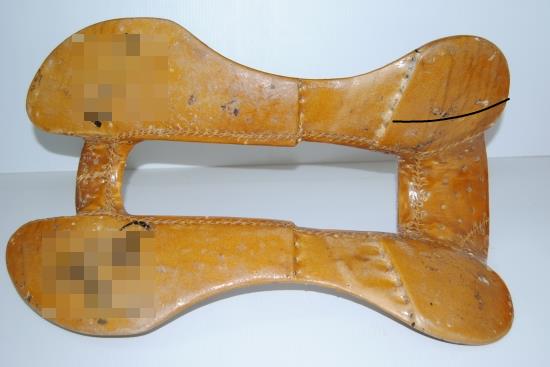
So, how does this differ from “flare”? Well, that depends on your definition of flare. The dictionary definition is “a gradual widening”. When it comes to saddles, what most people mean is a lot of curve in the front of the bar, starting back a few inches or even far enough that it can include the whole front bar pad. The idea is that the front of the bar actually lifts off the horse with no contact under it, which is supposed to give room for the horse’s shoulders to move freely. (This isn't needed, and this post shows why.)
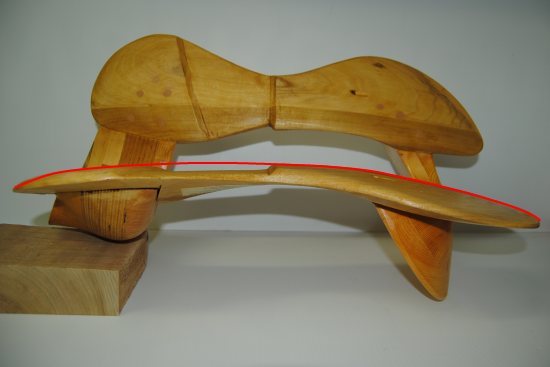
Practically, this increases the rock in the tree. Rock is the curve front to back along the bar, and by making the front bar pad “flare”, you have increased the rock a lot on the front bar pad. This affects how the whole bar will sit on the horse.
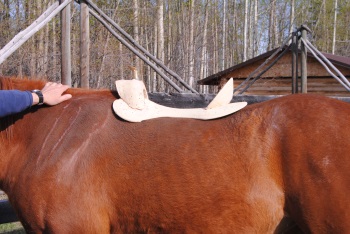 |
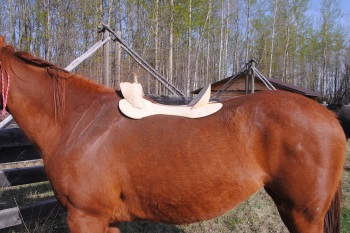 |
And what we said in our previous post about flare, what happens in real life is that the saddle moves forward until there is contact under the bars. And that puts the bars over the shoulder blades, and that causes high pressure and that damages the horse.
So to sum up, what are you looking for with all these curves? You want the crown to fit with the shape of the horse. You want the edges of the bars to have good relief – a nice curve and not a sharp edge. You want the back bar tips to come up a bit – slightly increased rock in that last 2” – to avoid pressure points on the loin. You want to avoid “flare” – excess rock at the front of the tree – because you want the rock to match the horse. You want the front bar tips to have good relief so there is a nice curve to make a smooth transition. You want the skirts blocked to follow that curve. And you want all this because you want a comfortable horse…
